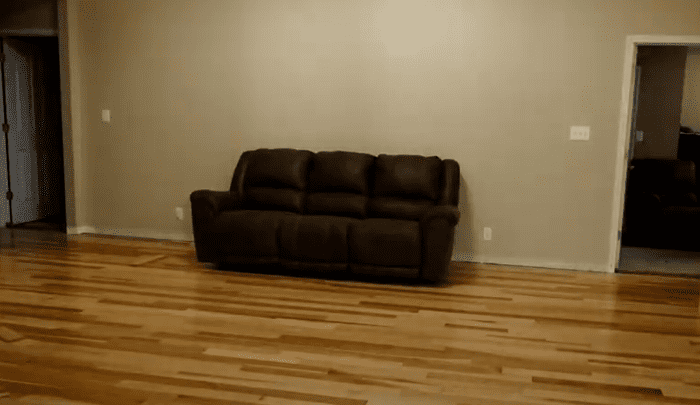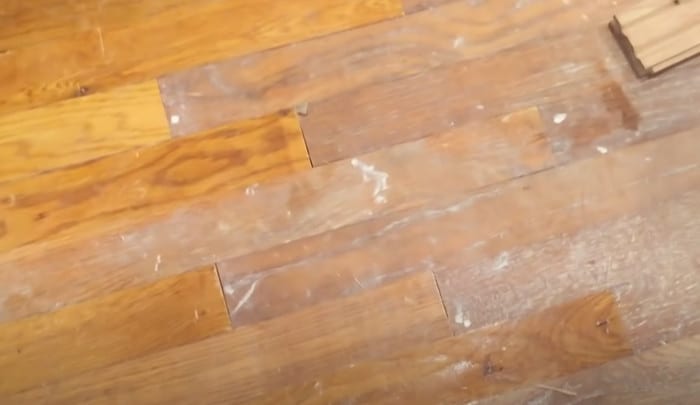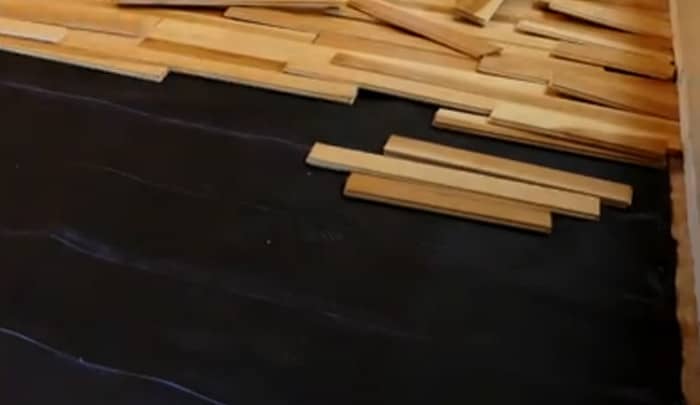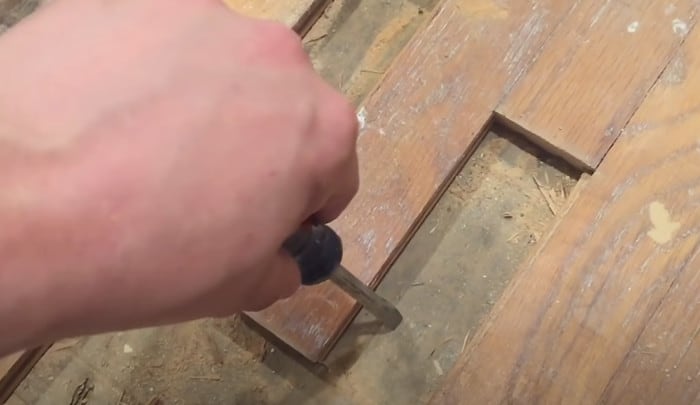Bringing the warmth of natural wood into a home can be one of the best decisions made for any renovation project. There are lots of options to choose from when selecting hardwood flooring, from more favoured species like Oak, to more unique alternatives like Hickory. Deciding between different hardwood floors can be challenging, but understanding the characteristics of each type can help you make an informed decision. Hickory hardwood flooring has a multitude of benefits, but also some drawbacks. Let’s dive into the nitty gritty of the pros and cons of Hickory hardwood Flooring to see what might work best for your next interior design endeavor.
Hickory hardwood flooring is generally very durable, but can be prone to some issues over time such as scratches, dents, warping, or discoloration due to exposure to water or the sun. Regular maintenance and proper care can help mitigate these potential problems. It’s important to regularly maintain and care for your hickory hardwood floors to minimize these potential problems.
“Translation of my experience to solutions is my goal. Having dealt with hickory hardwood flooring issues for a quarter of a century, I’ve realised that the key to mitigating common problems lies in understanding the inherent properties of the wood, the correct installation procedures, and regular, diligent maintenance. Each type of wood has its unique characteristics, and hickory is no exception. With its strong, resilient nature, hickory hardwood flooring can last for generations if properly installed and cared for.”
Xander Zachariah, Hardwood flooring specialist
Durability of Hickory Flooring
When considering the right type of flooring for your home, durability is a key factor. Hickory hardwood comes out at the top when talking about resilient floors that stand up to daily foot traffic. The strength and sturdiness of hickory make it a wonderful choice for areas with high levels of wear and tear. The Janka hardness rating for hickory flooring stands at 1820, which is one of the highest scores compared to other hardwoods like Maple (1450) and Red Oak (1290). This high hardness rating contributes to hickory’s durability and resistance to wear).
On the other hand, with the added durability comes a higher cost than non-hardwood material like vinyl or laminate. Also, although hickory flooring is resilient and strong, if your home has high levels of humidity or moisture, it could lead to discoloration and warping over time. It is important that you measure your space’s humidity level or risk damage down the line.
Ultimately, these pros and cons should be weighed before making a final decision on installing hickory flooring throughout your home. If you live in a dry climate and plan on properly maintaining it, your hickory floor should last for ages without buckling or getting scratched.

Now that we have explored the issue of durability with regards to hickory flooring, let us move onto further examining maintenance and repair of this type of hardwood in the next section.
- A survey published in 2020 found that hickory is the third most popular choice of hardwood flooring among homeowners.
- Hickory hardwood floors have been reported to have a high rate of denting and scratching due to their hardness.
- According to an interior design study, hickory hardwood flooring also often requires more frequent refinishing than softer woods due to its harshness.
Must-Know Highlights
Hickory hardwood is one of the most durable types of flooring, but it comes with a higher cost than non-hardwood materials like vinyl and laminate. It can be damaged by high levels of humidity or moisture, so measuring this level before installation is important. If the climate is drier and proper maintenance is done, hickory flooring can last for ages without buckling or becoming scratched.
Maintenance and Repair of Hickory Flooring
Hickory hardwood flooring is durable and resilient, making it an attractive choice for homeowners who want a wood floor that looks beautiful but withstands daily wear and tear. The hardness of the hickory gives it a longer lifespan than softer woods, though it still requires regular maintenance to stay looking its best. Pros of hickory’s maintenance include being easier to clean up spills and that it likes most waxes and polishes. On the other hand, more frequent waxing and polishing may be needed to maintain hickory floors, especially if it is untreated.
When repairs are needed, hickory can usually be sanded down and restored without needing additional planks. This prevents costly replacement and makes quick replacement possible as opposed to many other types of hardwoods. Certain cuts on the plank can make installation easier; however, this can compromise the quality of the look of your floor. Furthermore, if your home experiences more extreme temperatures, you may have to replace boards that become warped due to temperature changes. With proper care, however, these scenarios should not occur frequently or at all.
To ensure that hickory floors continue to maintain their stunning appearance, they must be regularly cleaned with a vacuum or a broom and lightly mopped occasionally with mild soap or detergent. Additionally, any spills should be blotted up right away to prevent watermarks or stains. Protecting your hardwood floors through proper maintenance is crucial for their longevity and appearance. Regular waxing helps protect the wood grain surface from scratches and adds shine to the overall finish.
The next section will discuss scratches and cracks in hickory wood floors which may occur over time due to wear and deterioration.
Scratches and Cracks
Hickory hardwood flooring is incredibly durable, but it can scratch, crack, or splinter just like any other type of hardwood. The depth and visibility of these imperfections varies depending on the grain pattern, grade, and finish, but they do occur in hickory over time. Furthermore, even if a surface treatment or coating provides protection against damage, the underlying wood can still be scratched.

On the plus side, neither scratches nor cracks tend to require an expensive repair process as it may with a traditional polyurethane-finished floor. Often times homeowners can take care of light scratches themselves with commercial products such as wax and steel wool. However, when deep cracks appear, it is wise to look into professional repair options. For more extensive damage, you might consider refinishing your hardwood floors, a process that can restore their original beauty.
The cons of cracking and scraping depends largely on how much maintenance has been done and how the home is usually used. If a homeowner refrains from heavy foot traffic or regularly cares for their floors then they should not expect any problems. Conversely, large families with pets who live a busy lifestyle will likely find themselves having to address scratches and cracks more often than those without children or pets.
Discoloration and fading are natural phenomenon that occur in all types of hardwood flooring after prolonged exposure to sunlight. As such, the next section will examine how this affects hickory flooring specifically.
Discoloration and Fading
When it comes to discoloration and fading, Hickory hardwood flooring holds up surprisingly well compared to other wood flooring materials. The natural hue of hickory boards can range from light tan to reddish brown, which makes it a popular choice in many homes. Over time, however, the wood may darken as a result of exposure to sunlight or chemicals found in some brands of cleaning solutions. This is why it’s best to always use a natural cleaner when caring for your hickory floors.
While the color change can be seen as a negative by some, others may actually prefer the deeper color of older hickory floors. The good news is that depending on where you’re located and the amount of sun exposure your home receives, any fading should be minimal and easy to manage over time.
No matter what they look like, hickory floors are remarkably durable and require only minimal maintenance to remain beautiful for decades. With that said, the next section will take a closer look at the installation process for these popular flooring materials.
Installation of Hickory Flooring
The installation of hickory hardwood flooring is both an art and a science. On the one hand, it can be quite difficult to install, due to its density and hardness. The hardness of hickory also makes it more prone to crack or split as it expands or contracts due to moisture or temperature changes. On the other hand, when properly installed, hickory provides a beautiful natural look that is unmatched by other hardwoods.

When installing hickory, it is important to pay close attention to detail. Since hickory is so dense, any imperfections on the subfloor will be very visible in the finished product. It’s important to properly prepare and level the subfloor before installing hickory planks, and use high-quality adhesives, nails and fasteners throughout the process. Additionally, because of its hardness, special tools such as hammer drills may be necessary for certain steps in the installation process.
Installation of hickory flooring also requires proper care and maintenance during and after construction is complete. It’s important not to let excess moisture build up during the installation process, as this can lead to expansion and contraction issues down the road. Additionally, ensure all expansion gaps are left open around perimeter walls such as fireplaces or kitchen islands so that the flooring has enough space to expand and contract without damage.
Correctly installing hickory hardwood flooring can be a complicated process that requires skill, but with careful planning and attention to detail you can achieve incredible results that will last for many years. While there are some risks that come with installing flooring made from this species of wood, if done correctly these risks can be minimized significantly.
With this in mind, we now turn our attention to another issue often associated with hickory hardwood flooring: expansion and contraction caused by moisture.
Expansion and Contraction Caused by Moisture
When it comes to wood flooring, moisture can affect the stability and longevity of the material. This is where hickory hardwood flooring’s expansion and contraction caused by moisture plays an important role.
Hickory hardwood flooring is more sensitive than other types of flooring when exposed to humidity and moisture as it is a softer type of wood. On the one hand, ideal environmental conditions will limit the degree at which hickory can expand or contract. On the other hand, with changes in temperature or poor ventilation, hickory can experience significant damage from humidity. Furthermore, those partial to DIY installations should be aware that, due to its sensitivity to moisture, hickory hardwood flooring requires a certain level of precision for installation and maintenance in order to avoid costly damage.
It is important to identify when excessive moisture may cause deformation or distortion in the hardest of woods such as hickory due to expansion and contraction. When installed correctly however, hickory’s durability allows homeowners greater peace of mind when considering potential long-term wear and tear.
Having discussed expansion and contraction caused by moisture, now it’s time to explore the areas not suitable for Hickory flooring.
Areas Not Suitable for Hickory Flooring
Hickory hardwood flooring is known for its exceptional strength and design potential. However, it is not suitable for all areas of a home, and there are certain occasions where this durable flooring might not be the best choice. Primarily, due to its hardness, hickory may not be suitable in rooms that have high levels of foot traffic or furniture movement. Over time, the constant abrasion against hickory floors can compromise the wood and reduce its overall lifespan.
However, some homeowners may want the added durability of hickory in these high-traffic areas. If that is the case, then it’s important to consider adding area rugs or protective mats to absorb the impact from heavy movement. Still, if your home experiences increased wear-and-tear in particular areas like hallways or living rooms, another type of flooring may be more suited for preventing long-term damage.
Hickory also requires humidity levels be monitored closely to ensure the material does not dry out and start cracking or warping. This means that any area subject to significant changes in temperature or moisture run the risk of damaging this hardwood flooring over time. In comparison to more forgiving materials such as laminate or vinyl, installing hickory flooring in an area exposed to frequent changes in humidity could result in costly repairs down the line.
Ultimately, homeowners should consider their environment and lifestyle before choosing hickory flooring. Areas in which hickory is better suited include bedrooms and study spaces, which generally experience less activity throughout the day; where high levels of humidity are less likely to present a problem as well.
Now that we have discussed areas where hickory may not be suitable for flooring purposes, let us take a look at how much it will cost to replace existing hickory flooring with a new one in the next section.
Cost of Replacing Hickory Flooring
Hickory hardwood flooring is one of the more expensive options for residential flooring, partly due to its durability and aesthetic appeal. The cost for installation of hickory wood typically ranges from $4 to $9 per square foot, but the total cost depends on factors such as size and subfloor preparation. In addition to installation, homeowners should also factor in the cost of services such as sanding, staining, and finishing. This can add up to hundreds or even thousands of dollars when it comes to replacing hickory flooring.

The cost of replacing hickory flooring may also depend on whether it needs to be removed first or not. If the existing floor is in relatively good condition and just needs refinishing, then the work might only cost a fraction of what it would be if the entire floor needed replacement. On the other hand, if there is significant damage or deterioration, then professional contractors will need to remove old boards before laying down new ones. This additional step can significantly drive up labor costs.
In general, replacing hickory floors is an investment in quality that can pay off over time. Hardwood lasts much longer than other materials like tile and carpet, so in the long run, the costs saved on regular maintenance or repair bills will probably make up for the initial expense. Although hickory flooring tends to be one of the more expensive kinds of hardwood floors available, many homeowners feel that it provides a level of sophistication that makes it well worth their money.
Responses to Common Questions
Are there any health concerns associated with hickory hardwood flooring?
No, there are not any health concerns especially associated with hickory hardwood flooring. In fact, it is one of the safest flooring materials available. It is naturally anti-fungal, anti-allergenic, and does not retain any allergens or pollutants like carpet does. Additionally, hickory hardwood is more durable and scratch-resistant than many other types of wood, making it less likely to harbor unwanted bacteria or dust mites. Overall, hickory hardwood flooring is a great option for anyone looking for a safe and stylish material for their home.
What maintenance is required for hickory hardwood flooring?
Hickory hardwood flooring is known for its strength and durability, but it does require some maintenance to keep it looking its best. The type of maintenance required will largely depend on how the floor is treated in daily life. To keep hickory hardwood flooring looking its best, it should be regularly vacuumed or swept to remove dirt, dust, and other debris that can scratch the surface. Additionally, a mild cleaner should be used when necessary to remove spills and spots. It is also important to protect the floors from scratches and dents by using area rugs or furniture pads under furniture pieces on the floor. Finally, hickory hardwood floors should be refinished at least once every 5-7 years to refresh the look and improve durability. The amount of maintenance you need to perform will largely depend on how much use your floors get and the climate they are located in.
What are the common signs of damage in hickory hardwood flooring?
The most common signs of damage in hickory hardwood flooring are gaps and splits in the planks, warping due to water exposure, discoloration from UV exposure, scratches and dents from everyday use, and cupping caused by moisture imbalances. Gaps and splits can occur when a hickory plank expands too quickly or has been improperly installed. Warping can be caused by too much water exposure or flooding. Discoloration can occur if hickory is exposed to direct sunlight for an extended period of time. Scratches and dents can occur due to day-to-day use or dragging of furniture across the wood. Cupping is caused by uneven moisture levels between the underside and top layer of a plank. Each of these issues can be solved with regular maintenance and proper installation techniques.





As an interior designer, I’ve found hickory to be an impressive wood due to its unique grain patterns and superior durability, especially in high-traffic areas of the home.
Having worked with Hickory on several projects, I’ve found it to be not just durable, but also incredibly versatile. Its distinctive grain patterns add a unique aesthetic element, which I believe lends any space, a particularly alluring depth.
When opting for Hickory hardwood flooring, expect it to behave like the eldest in the family. It tends to be resilient, tough and distinctively noticeable, holding its own charm. However, like every family patriarch, it has its stubborn streak; its hardness can make it a challenge to work with, especially for DIY enthusiasts without much experience. Nonetheless, the charm its grain pattern imparts to a room is, in my opinion, unmatched by any other hardwood species.
Salvadore, you’ve summed it up perfectly. Hickory’s stubborn streak is indeed analogous to an elder patriarch, but the effort pays off massively in terms of aesthetics.
I’ve been working with Hickory for almost two decades and while it’s a challenge to master, the end result is always satisfying, offering a unique blend of character and warmth that few other wood types can match.
In terms of maintenance, how often should one refinish Hickory flooring, or does that depend entirely on wear and tear?
Hi Nestor, in my experience, generally Hickory flooring would need to be sanded and refinished every 7-10 years or so but yes, it largely depends on the wear and tear as well as how well it’s taken care of over the years. Also, using area rugs in high traffic parts of your home can help extend the life span of your hardwood floors.
One thing I’ve found from my own ever-changing parade of houses is that hickory, while robust and handsome, can have its challenges. The hardness makes it difficult to install yourself unless you’ve got great tools or lots of patience. Often you need to pre-drill before nailing it down!